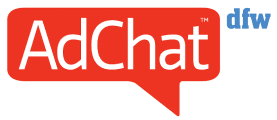Perhaps a little-known holiday, National Boss/Employee Exchange Day was recently held on Monday, September 11. This is a special day celebrated the first Monday after Labor Day where bosses and employees switch places in order to get a taste of each other’s responsibilities. For just one day, both groups get to step into each other’s shoes and see what life is really like.
In some companies, the day might find Management answering phones, fetching coffee, or delivering the mail. And an employee might wear dressier clothes, enjoy a long business lunch or spend the afternoon “entertaining clients” by playing a round of golf. But is this really the point of the day? Should the idea of knowing employee preferences and pain points really be limited to just one day of the year?
Undoubtedly, COVID-19 has changed the workplace and the way that employers and employees interact. The Great Resignation was the first move by employees, resulting in the Great Reshuffle by employers. But what about today?
Svenja Gudell, chief economist at Indeed, recently said, “Demographic shifts and aging populations mean countries like the U.S. will experience an ongoing shortage of workers and hiring will remain challenging for years.” For employers, it is imperative to create a culture that provides the pay, professionalism, perks, pleasure, positivity, and purpose to attract and retain top talent.
But is that such a bad thing? The secret is that companies with the best culture tend to be more profitable and successful. A recent article in Moneyzine found that companies with a good culture report 4X higher revenues. And according to LinkedIn, a recent Harvard Business Review study found that “culture can account for up to half of the difference in operating profit between organizations in the same business.”
“Whoever holds the skilled talent holds the key to the future.“
– Manpower Group
On the most basic level, Forbes defines workplace culture as: “The shared values, belief systems, attitudes, and the set of assumptions that people in a workplace share.” In the month where we participate in National Boss/Employee Exchange Day, companies should not be spending just one day in their employees’ shoes. They should be taking a hard look at themselves and asking what makes employment there better than somewhere else. After all, employees have options like they have never had before when it comes to their employment and career trajectory.
Ultimately, employees want to feel connected to their colleagues and to the company’s mission and core values. Put another way, employees want a positive culture. And it seems like companies want that as well. In fact, research by Deloitte shows 94% of executives and 88% of employees believe a distinct corporate culture is important to business success.
We hear it every day from companies—of every size and industry, across nearly every state—that they’re facing unprecedented challenges trying to find enough workers to fill open jobs. The labor market remains tight, and hiring is incredibly tough. The Manpower Group found that 77% of employers report difficulty in filling roles in 2023—a 17-year high. This statistic is +2 percentage points year-over-year, and more than double the difficulty in 2015 (38%). To make matters worse, Zenefits found that 63.3% of companies say retaining employees is actually harder than hiring them.
It’s no surprise that Gartner found that 46% of HR leaders report recruiting is their top priority in 2023. And as the calendar months continue to turn for 2023, 50% of organizations think the competition for talent is likely to increase in the next six months. It’s no secret that the need to both retain and attract employees is at an all-time high, as is competition for those top employees. In times of tight labor markets or economic ups and downs, an infectious company culture is recession-proof and may give you the advantage you need when the going gets tough.
“Culture is simply a shared way of doing something with a passion.”
– Brian Chesky, Co-Founder & CEO, Airbnb
Spire is a B2B branding agency that elevates B2B brands. And that means both inside and outside the company walls. But we must practice what we preach, which is exactly why we began crystalizing our own company culture a year ago. Before we could expect clients to stress the importance of culture, it was important that we knew who we were and what made us tick as a company.
There are a lot of different ways in which a company can best articulate their culture, core values, guiding principles, personality traits, people philosophy, or whatever you might call it. But the following steps have worked well for us over the last year, as we have now created culture for ourselves and four different clients.
Step 1: Inform
An Executive Team sitting in a conference for an afternoon and brainstorming the company’s culture is not the best way to articulate culture. It has to come from others. The first step in defining culture is by talking with your employees. Perhaps this is done in a series of qualitative workshops, or maybe a quantitative survey—or both. But the important thing is to include your employees and provide them an honest forum to express what the culture is and what it can be. Ask them what they love about the company, and what makes your company uniquely different from others.
A similar process can be done with your customers. Ask them about your processes and your people. How you work with customers says a lot about your culture.
Another trick is to look at your best employees; not necessarily your top producers, but the people who truly seem to encapsulate your culture. What are the traits that makes them so perfect for your company, or what makes them such a perfect representation of your company culture? Identifying these traits begin to inform the traits you will look for in new hires.
Step 2: Define
Now that you have all this rich information and input from your customers and coworkers, what’s next? Spend time poring over the information. Truly hear what people say and feel about your company. Are things on the right track? Do serious questions need to be asked and addressed about cracks in the culture?
At this phase, several different themes tend to rise to the top. Separate all the facts into the various themes and drill down on the positives and negatives.
And then begin to project where you want things to go to bring joy and fulfillment to employees. In defining your culture, think about all the aspects of being a valuable employee at your company. Your culture should of course be about work and productivity, but it also should encompass things like the treatment of people, morality, personal development, and quality to provide a complete perspective.
After all, culture is not just about work. It’s about relationships and how we give of ourselves to coworkers, customers, and the community.
Step 3: Differentiate
When looking at company core values or guiding principles, it’s funny to see how so many are exactly the same. It’s like they all Googled the same word cloud. Words like “integrity,” “quality,” or “commitment” always seem to find their way into the conversation. And then, after all the bold, chest-beating words are used, companies might end it all by crowbarring “fun” into the statement.
None of these sentiments are wrong. They are simply overused. And they lack emotion. As you organize your input into themes, don’t stop at the expected corporate wording. Make it personal and meaningful to your company. Perhaps take your words and turn them into a more meaningful acronym. Or don’t make them words; instead, turn them into creative phrases. Making your culture statement unique will make them more impactful. Ask yourself, “Have I heard or seen this before?” And contemplate whether great employer brands like Starbucks, Zappos, Chick-fil-A, Apple, Southwest Airlines, and others would handle it that way. Take statements a step further and make then ownable and unique to you.
“Company culture is the backbone of any successful organization.”
– Gary Vaynerchuk, Serial Entrepreneur
Step 4: Reinforce
The strongest brands are the ones that are most consistent. Employer brands are the same way. Culture must routinely be reinforced in order to make it stick. And when it sticks, and people act on it intuitively, then you’re working with something great.
The day a company rolls out its new culture is incredibly important. The worst thing you can do is to take your new culture statements and put them in a boring frame on the wall, or just distribute in an email or simple handout. It’s a big day that deserves a big reception. So carefully craft your rollout, involving top leaders in the organization. Make it informational and inspirational. Capture your culture statement in materials and swag that can be distributed at the event and used on an ongoing basis by your team.
But what happens the next day, and the day after? It is imperative that your culture statements be shared and reinforced with great regularity if you want them to be lived throughout your organization. Perhaps you open meetings by providing an example of someone who has lived your core values. Maybe they are highlighted in your company newsletter or on social media. One of our clients even implanted “culture camps” where employees went offsite to take a deeper dive into culture. And consider quarterly or yearly awards that recognize your employees who have gone above and beyond in living out your corporate culture.
Step 5: Empower
Recognition of culture should not just live with you, it must also live with employees. They need to have tangible ways of living out your company culture is small and big ways. Many of us are familiar with how Southwest Airlines employees inject their own personalities into the job, whether they’re doing dress-up days or humorous announcements on the intercom. This speaks to their philosophy of happy employees = happy customers = happy investors. It also speaks to their culture tenets of freedom, heart, teamwork, and individuality.
Similarly, Starbucks employees use the “$5 customer service” rule. Any employee has the ability to make things right with a customer on an amount adding up to $5. This could be a free coffee if the line is too long, or a muffin for coffee prep mistakes. While this helps de-escalate a bad situation, it also reinforces their core values of human connection, warmth, and strengthening communities.
At Spire, we have 12 guiding principles in our culture book. Each month, we focus on one and ask our employees weekly at status meetings to provide examples of others living that principle. The exercise makes employees focus on the great things their coworkers are doing and allows them to provide praise to build rapport in the company and among coworkers. We have also set up a Slack channel called “Kudos” for daily praise on a smaller scale. By the end of the year, we have spent time reinforcing all 12 principles and employees have been empowered to praise others.
Find ways to engage your employees to not only live your culture, but empower them to see goodness in others and share positivity.

“You can have all the right strategies in the world; if you don’t have the right culture, you’re dead.”
– Patrick Whitsell, Talent Agent & CEO
Step 6: Evolve
Your company products, offerings, and even your management might change. Likewise, your culture may evolve over time, and for the better. The idea is to keep your culture statements fresh and a reflection of who you are and what you want to be. So, it’s important to evolve your culture when it is opportune, while still maintaining some element of consistency.
As you begin each year, take a look at your culture and determine how it can be improved in the new year. Maybe that’s adding new programs, like an employee of the month program, philanthropy day, or an actual culture day that might occur annually on your company’s founding date.
Another idea is to come up with a relevant cultural theme for the year. It should be a take on your culture statements, but have a timeliness to what is happening with your business today. This theme should be inspirational and aspirational, referenced throughout the year, and celebrated at year-end. Little additions, changes, or enhancements to your culture statements can help it maintain relevancy and keep it alive as time goes on.
Step 7: Evangelize
Now that your company has developed its cultural identity and promoted it internally, it’s now time to let others on the outside know. From candidates to prospective customers, it’s important that your cultural image be defined and shared with others who might interact with you. You’ve done all this great cultural work, so it’s okay to have bragging rights.
So, where do you start? Consider greatly enhancing your Careers page on the company website. Beyond open positions and a list of benefits, prospective employees want to visualize what working at your company might look like. Show employee pictures and provide testimonials. But also outline your culture statements to show that you know who you are as a company, and who might make an ideal employee.
Next, enter the various Best Places to Work award shows locally and nationally. It’s one thing to say you have a great culture, but validating it with an award makes it feel even more legit. Also, by entering award shows, it forces you to consistently relook at your culture programs to ensure they truly are the best around.
And lastly, leverage your culture and coworkers in social media and even with an employee campaign. On your social media content calendar, schedule in employee engagement content regularly to show that people mean as much to the business as sales do. And consider an employee campaign that can enhance your Careers page and help externally with recruitment.
Spire has learned that if you identify your company’s core values, hire by them, onboard team members by them, and truly live by them, then your business is on a long-term path to success, profit, and growth. Now is your chance to give your company a “culture of culture.” It will make your job more enjoyable too.
Mike Stopper is Principal/EVP of Client Service and Planning at Spire, named the 2023 Agency of the Year by the D/FW chapter of the American Marketing Association. He is AAF Dallas’ most-awarded account lead over the last eight years, and a back-to-back winner of Ad Age’s Best Places to Work.
To stay up to date on agency news, awards, and blog posts, subscribe to our Spire Wire newsletter.










